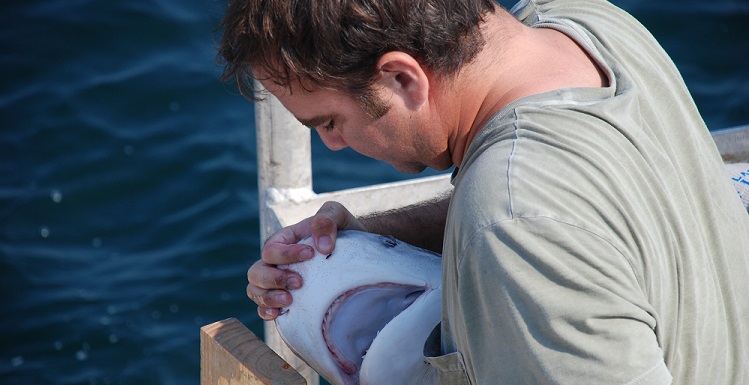Researcher Attempts to Solve Puzzler: Birds in Shark Stomachs
Posted on March 11, 2015

Shark! The word can strike shivers of fear in the general public, but the reality is that their low reproductive rates and high demand in Asian markets have threatened the global conservation status of many of these fish. Sharks play a vital role in the ocean’s food web, and scientists worldwide are working to better understand, protect and conserve sharks in a number of ways.
Here on Alabama’s Gulf Coast, Dr. Marcus Drymon of the University of South Alabama and the Dauphin Island Sea Lab is studying what the local shark populations consume, and the answer may surprise you. Adult tiger sharks are known to have a diverse diet, which includes coastal birds, such as seagulls and herons. An examination of the dietary habits of juvenile tiger sharks in the northern Gulf of Mexico, however, has shown an even more unusual and distinct part of their diet – songbirds, such as wrens, woodpeckers, doves and yellowthroats.
How do these juveniles catch these songbirds? And what are these birds doing in the ocean? To further examine this phenomenon, Drymon is turning to Experiment.com to crowdsource funding for satellite tags.
Drymon said, “As a first step in answering these questions, we need to understand how often, and where, juvenile tiger sharks are coming to the surface waters off Alabama’s coast. By applying satellite tags, we can better determine their feeding behavior. How often are they coming to the surface, and when they do, it is near gas platforms or other man-made structures that might attract birds?”
The project is seeking four satellite tags at $1,700 each, for a total of $6,800. Experiment.com will keep the donation window open from March 2 to April 30, 2015. The top four contributors will have an opportunity to name a shark and receive updates on the location of that shark for the tag’s lifetime.
Drymon will also keep donors and others apprised of the tagging program on a video blog on Experiment.com.
“Sharks have, unfortunately, received a bad rap, whether it’s from movies or exploitative television,” said Drymon. “The simple truth is we need these apex predators in our oceans. Crowdfunding is a great way for the public to get involved in scientific research and help conserve these animals at the same time.”
To view a video about the project and to donate to this program, visit www.experiment.com/tigersharks





